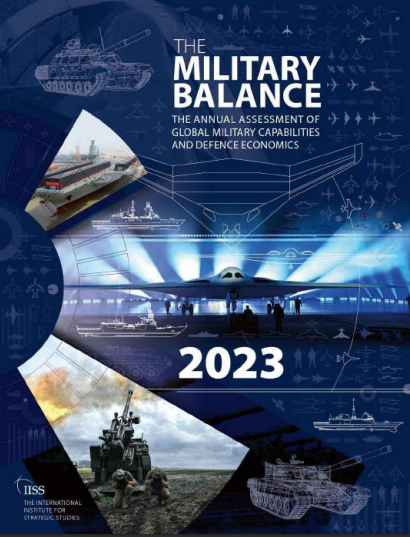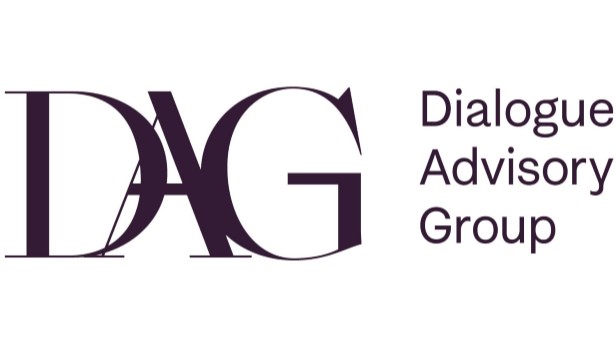The Military Balance 2023 is an annual report by the International Institute for Strategic Studies (IISS). It assesses the military capabilities and defense economics of 173 countries. The report offers updated data on military organizations, equipment inventories, and defense budgets. The 2023 edition discusses major global defense events such as Russia’s invasion of Ukraine, lessons emerging from the conflict, and China’s military modernization.
The report is organized into chapters that evaluate different regions’ military capabilities and defense economics. These regions include North America, Europe, Russia and Eurasia, the Middle East, Asia, and the Pacific. The report also features graphics and maps highlighting key equipment developments and military issues. The Military Balance 2023 is an essential resource for individuals involved in security, defense, and policy analysis and research.
Key Trends and Highlights
Globally, defense expenditure has increased nominally, but due to elevated inflation, expenditure in real terms has decreased. Balancing defense investments with economic realities has become a significant challenge for governments, particularly in Europe and Asia. The ongoing modernization of the U.S. military has also raised concerns among allies and partners regarding accessibility, affordability, and potential for increased interoperability of U.S. weapons capabilities.
The geopolitical focus has shifted east and north, with NATO likely to welcome Finland and Sweden in 2023. European states are reaffirming defense spending commitments and enhancing military capabilities. Ukraine’s resistance, bolstered by Western training and equipment, has disrupted Russia’s plans.
The Euro-Atlantic and Asia-Pacific regions are grappling with different strategic challenges. The Ukrainian conflict and growing perceptions of threats from China have increased defense spending. However, economic issues such as weak currencies, sluggish economic growth, persistent supply chain disruptions, and escalating inflation have impacted public spending decisions.
In nominal terms, global defense expenditure rose in 2021 and 2022. However, high inflation led to a decrease in real terms for both years. It’s estimated that 2022’s inflation wiped out approximately $312 billion of global defense expenditure, a substantial increase from $222 billion in the previous year.
As security challenges increase, certain governments, especially in Europe and Asia, see reduced returns on their defense investments. The ongoing modernization of the U.S. military is raising concerns among its allies and partners about the accessibility, affordability, and potential for enhanced interoperability of U.S. weapon capabilities.
Consequently, these allies and partners are considering forming alliances with like-minded nations to share the financial burden of equipment production. This could also benefit Washington by helping to develop and maintain their partners’ defense industrial bases.
Key themes in defense economics
First, inflation will be a significant challenge for defense policymakers in 2022. It has effectively reduced funding over the past two years. Regardless of the base year, the trend is evident. 2022 saw the second consecutive year of real-term reductions in defense spending, despite nominal increases driven by strategic factors, such as the conflict in Ukraine and escalating tensions in East Asia.
The second theme involves the delicate equilibrium policymakers must maintain between defense spending increases driven by strategic factors and economic challenges restraining growth. These conflicting priorities shaped public spending decisions. The third theme centers around the widespread budget revisions experienced in 2022, not just in expected regions like Russia and Europe but also in countries such as Ethiopia and Saudi Arabia. These revisions, spurred by shifts in strategic and economic conditions, significantly changed the course of defense spending.
The concluding theme highlights the importance of transparency. Countries such as Germany and Poland have augmented their defense budgets with extra-budgetary funds, like Germany’s 100 billion Euro fund and Poland’s Armed Forces Support Fund. Although these funds can expedite defense investments, they also bring up issues regarding accountability and transparency. This is especially relevant considering the rising geopolitical tensions in Asia and Europe. Going forward, governments must balance threat considerations with economic realities. Hopefully, better inflation forecasts will stabilize and reduce the pressure on defense investments.
Regional Outlook
The global interdependence of security underscores the importance of securing the European security order for the West. Assurance provided in Europe directly impacts the expectations of partners in the Indo-Pacific and traditional Middle Eastern allies. A failure to secure the European security order could undermine this assurance and put commitments to partners in various regions at risk.
In defense economics, questions have arisen about how last year’s conflicts have affected defense spending in the Gulf region. There’s also a desire to understand the connection between increased self-reliance, local production, and the localization of defense spending. As 2022 began, regional spending remained relatively stable and was realistically decreasing. However, a surge in oil prices resulted in significant surpluses, allowing countries like Saudi Arabia to increase their defense budgets significantly. This shift altered the regional trend from a 2% real reduction to a 9% real increase. With improved fiscal capabilities, countries might prioritize research and development within defense spending to achieve self-sufficiency objectives.
Regarding the rise in defense spending in Europe, the emphasis is on acquisitions and procurement to boost defense capabilities. Countries like Poland are allocating more resources to capital spending, which could challenge the defense industry. Supply chain constraints, rising costs, and material shortages could hinder effective expenditure. Given the intricacies of extensive domestic development, immediate solutions might involve ready-made purchases and upgrades. Transparency, accountability, and efficient execution are crucial for successful increased defense spending.
Key trends and developments:
- The ongoing war in Ukraine: The war in Ukraine has had a significant impact on the global military balance, with Russia’s invasion of Ukraine causing a major shift in the European security landscape. The war has also highlighted the importance of cyber capabilities and the need for countries to strengthen their resilience against hybrid warfare.
- The rise of China: China’s military continues to grow rapidly, and it is now the second most powerful military in the world. China’s military modernization is focused on developing new technologies, such as hypersonic weapons and artificial intelligence, and expanding its power projection capabilities.
- The changing nature of warfare: The nature of warfare is changing, with new technologies and tactics emerging that are challenging traditional concepts of defense. Cyber warfare, unmanned systems, and space warfare are increasingly important in modern warfare.
Conclusion
The Military Balance 2023 report provides a comprehensive overview of global military capabilities and defense economics. The key findings of The Military Balance 2023 report by the International Institute for Strategic Studies include:
- Global Defense Developments: The report briefly assesses important global defense developments, including Russia’s full-scale invasion of Ukraine and emerging lessons from the conflict.
- Military Capabilities and Defense Economics: It assesses the military capabilities and defense economics of 173 countries worldwide, covering military organizations, equipment inventories, and defense budgets.
- Regional Assessments: The report is divided into several chapters that assess the military capabilities and defense economics of different regions, such as North America, Europe, Russia and Eurasia, the Middle East, and Asia and the Pacific.
- NATO and Security Fears: NATO has found renewed purpose, and there are expectations of gaining two new members in Finland and Sweden. Sharpened security fears have led several European states to renew their defense spending commitments and focus on improved military capabilities.
- China’s Military Modernization: The report covers China’s military modernization and its implications for global security.
- Space and Outer Space: The report explores the military use of outer space, focusing on China, Russia, and the United States.
The Military Balance 2023



